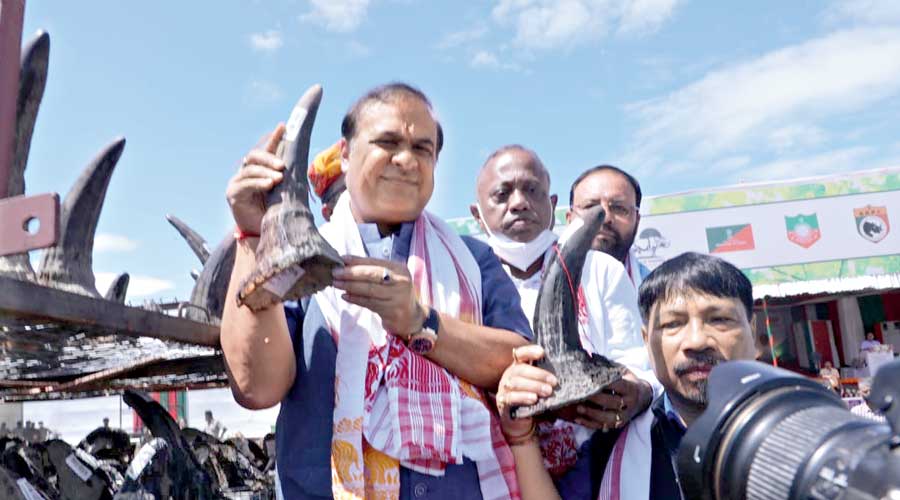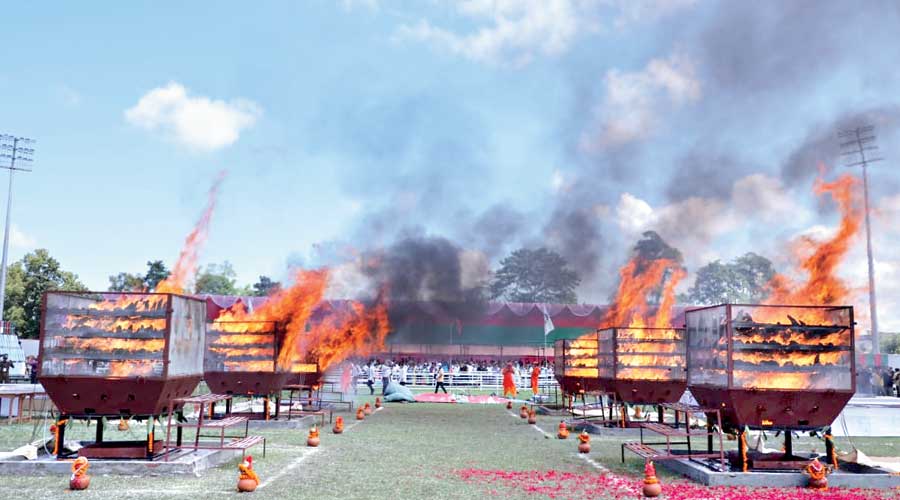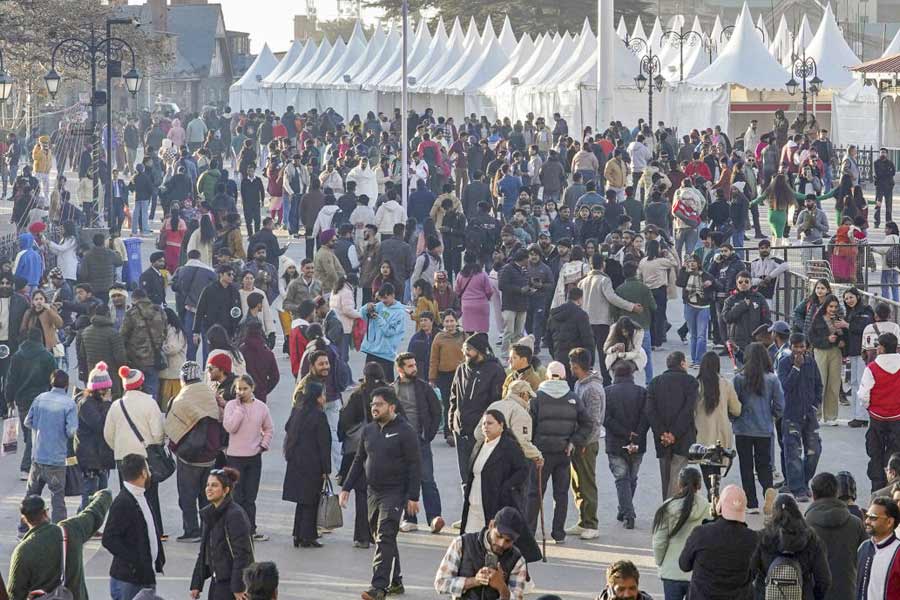The Assam government on Wednesday destroyed a stockpile of rhino horns to dispel the myth that they have medicinal value and send a strong message against the poaching of the animal and smuggling of its parts in an event to mark World Rhino Day.
Altogether 2,479 rhino horns brought from seven treasury offices in the state were consigned to the flames using six gas-based furnaces at the programme attended by several thousands at Bokakhat in Upper Assam’s Golaghat district amid the chanting of Vedic mantras and blowing of sankhas (conch shells) by 21 priests. It took over six hours to destroy the horns.
“We wanted to send a message to the world that Assam does not trade in rhino parts and that Assam does not believe that rhino horns are a source of medicine. Instead Assam believes in protecting the rhino from poachers. Don’t kill a rhino for its horn. It has no value. The horn has value till the rhino is alive,” chief minister Himanta Biswa Sarma said.
He said the state government chose World Rhino Day to carry out the exercise so the message gets more traction because the one-horned rhino is “not only integral to our civilisation, but also a symbol of our prized heritage and identity”.
An official told this newspaper that “daha sanskar” (cremation rites) for the dead rhinos those who died protecting them were performed by the chief minister and other ministers before the horns were consigned to the flames.
“Twenty-one purohits (priests) conducted the ritual. A 21-gun salute was also organised in their honour,” the official said.
The BJP heads the coalition government in Assam.
Sarma tweeted: “Today is a historic day for Assam & India. We have taken an extraordinary step of burning stockpile of 2,479 horns of single-horned Rhinos, first-of-its-kind globally in volume terms, pursuing vision of Hon’ble Prime Minister Sri @narendramodi of putting an end to poaching in Assam.”
Assam has 71 per cent of the world’s one-horned rhinos.
The government’s conservation initiatives over the years has seen the population of the greater one-horned rhinos, which is also the state animal, grow from 1,672 in 1999 to 2,652 according to the 2018 census, moving it from “endangered” to “vulnerable” under the IUCN Red List of Threatened Species.
Messages of leading conservationists from across the world were beamed on giant screens at the venue hailing the move to destroy the horns.
Bibhab Talukdar, wildlife expert and an authority on Asian rhinos, told The Telegraph that it was a bold step taken by the Assam cabinet in August to bust the myth surrounding rhino horns.
According to him, since India is a signatory to CITES (Convention on International Trade in Endangered Species of Wild Fauna and Flora), and since greater one-horn rhino is in Appendix-1 of the CITES List, India can’t trade wildlife trophies and the Indian Wildlife (Protection) Act, 1972, as amended till date doesn’t allow any trade of rhino horn.

Assam chief minister Himanta Biswa Sarma (left) with a rhino horn
“As such, rather than keeping a huge rhino horn stockpile in government treasuries, it was imperative to take a bold decision to dispose of the same in public view to send a strong message that rhino horn is not medicine,” Talukdar, who attended the programme, said.
Altogether 94 horns being preserved included the longest (57cm) and heaviest horns (3.05kg). Samples for future genetic analysis were extracted from the rhino horns marked for destruction and preservation by drilling.
A forest department statement said due to demand in some countries, poaching pressure on rhinos is ever persistent and it is intended that consigning rhino horns to flames will dispel these myths about its medicinal values without any scientific backing.
Prior to selecting the horns for destruction, an elaborate process of reconciliation of rhino horns stored in seven treasuries of the state had been carried out by a committee chaired by the chief wildlife warden, Assam, with the help of a technical committee and seven respective zonal committees.
The re-verification or reconciliation exercise was carried out in the presence of civil society members, members from non-governmental organisations, media, police and district administration officials.
The entire process was carried out according to the provision of Section 39(3)(c) of the Wildlife (Protection) Act, 1972, wherein a public hearing had also been carried out on August 21. There was no objection to the move. The section deals with destruction of wildlife parts, Talukdar said.
Referring to suggestions from a few quarters that the accumulated stockpile of rhino horns could have been sold to earn revenue by the government, Sarma said it was against the “country’s law to sell or buy wildlife properties and resources”.
“Selling these horns would only propagate the very myth of rhino horns containing medicinal values which the state government wants to bust. Just as trade in human organs cannot be allowed, we are committed towards curbing animal organ trade,” Sarma said, adding that Kaziranga National Park will reopen for tourists from October 1.










